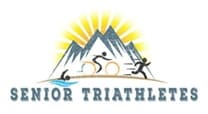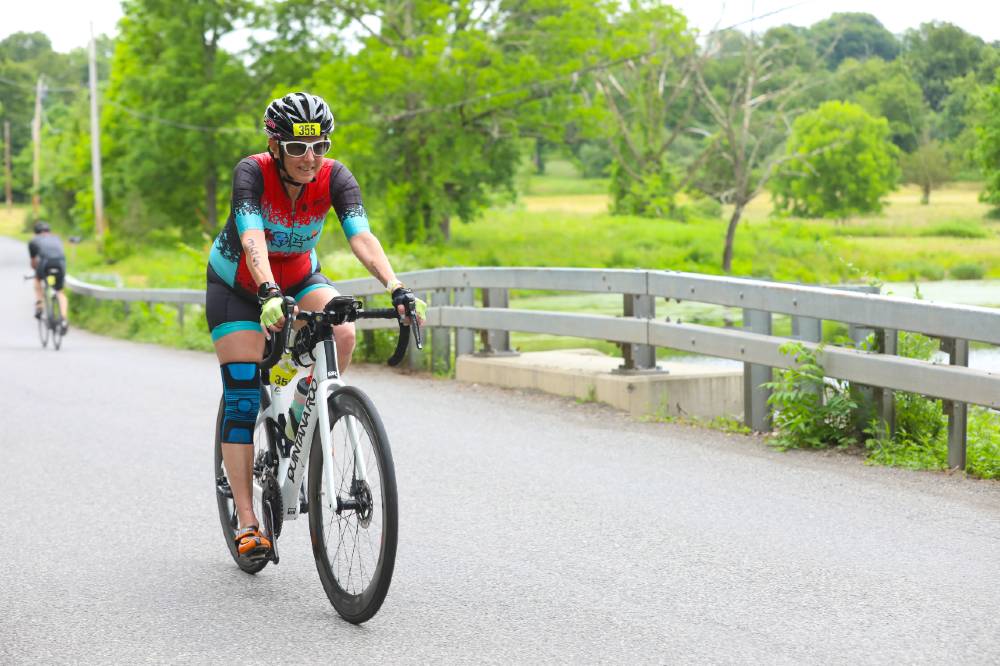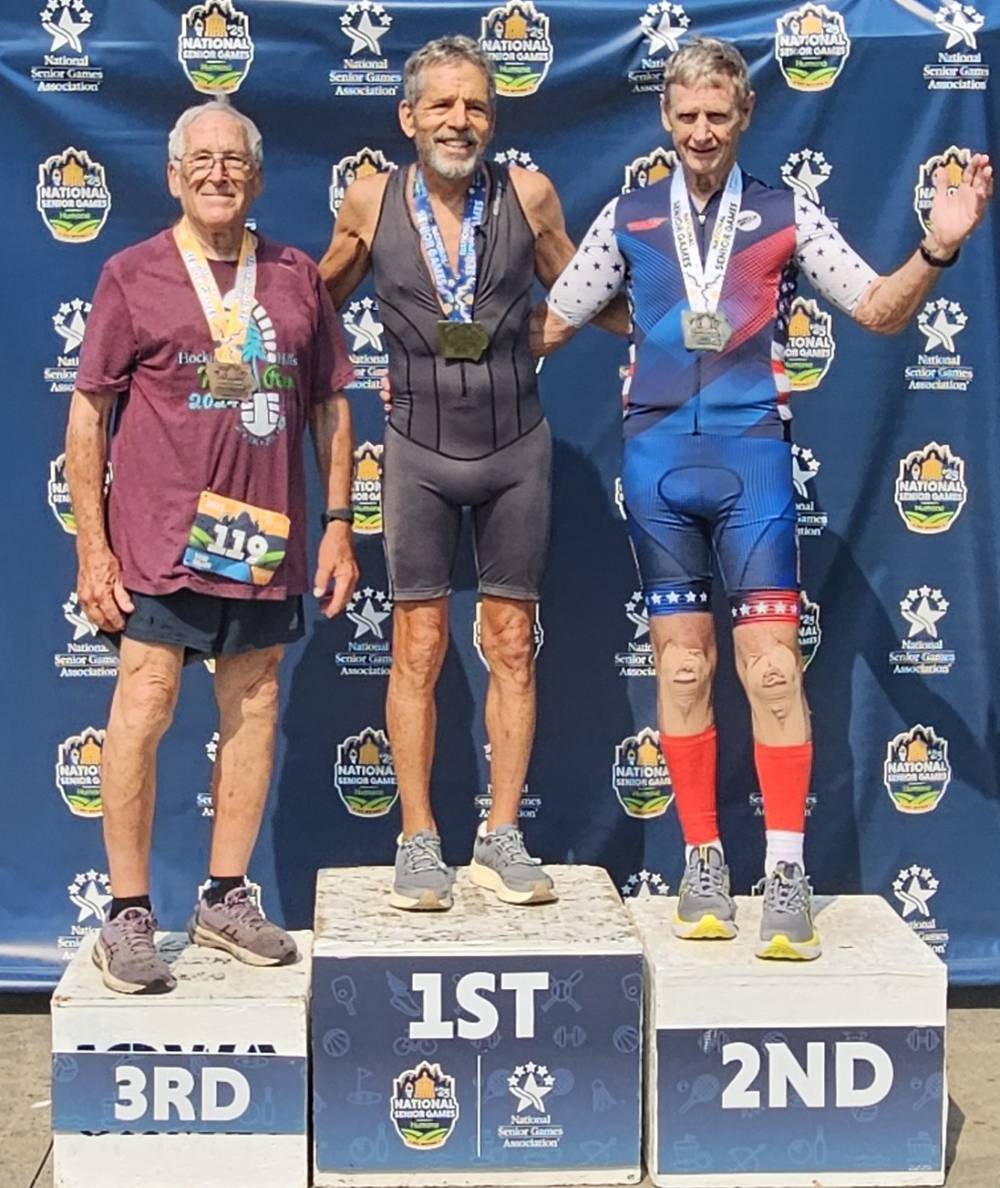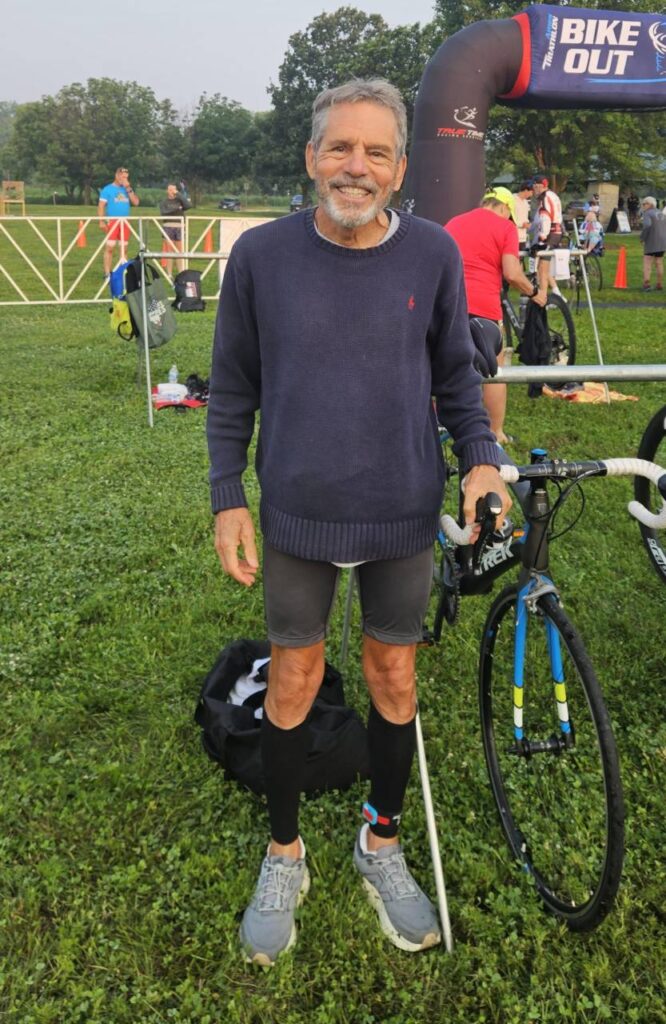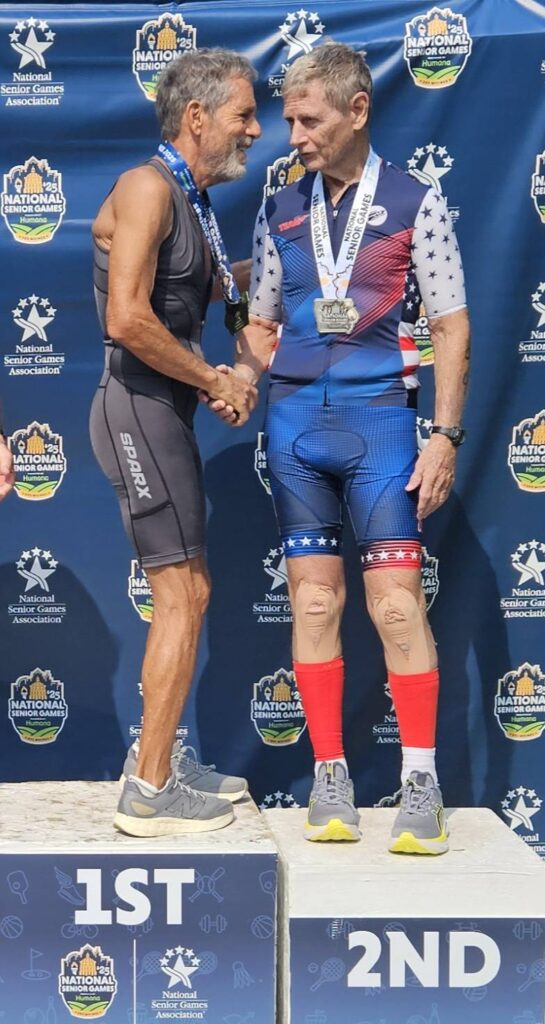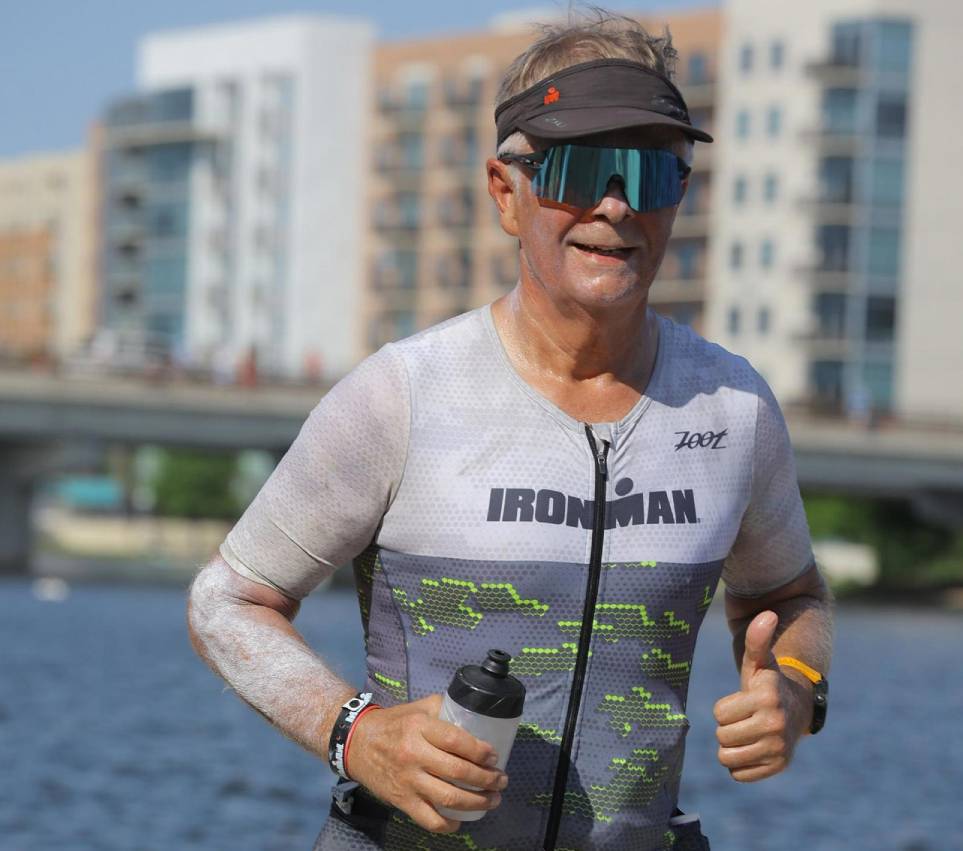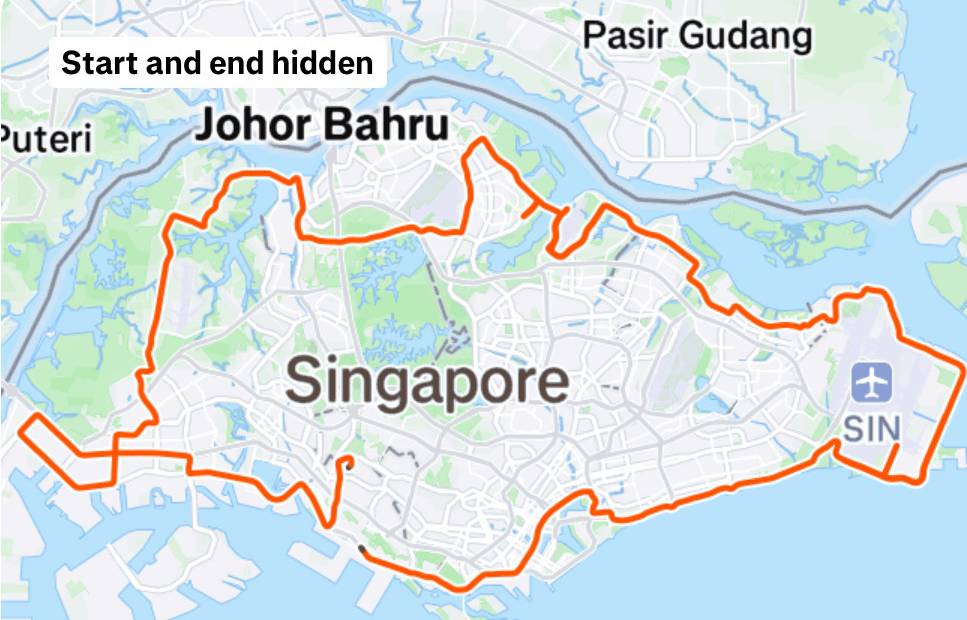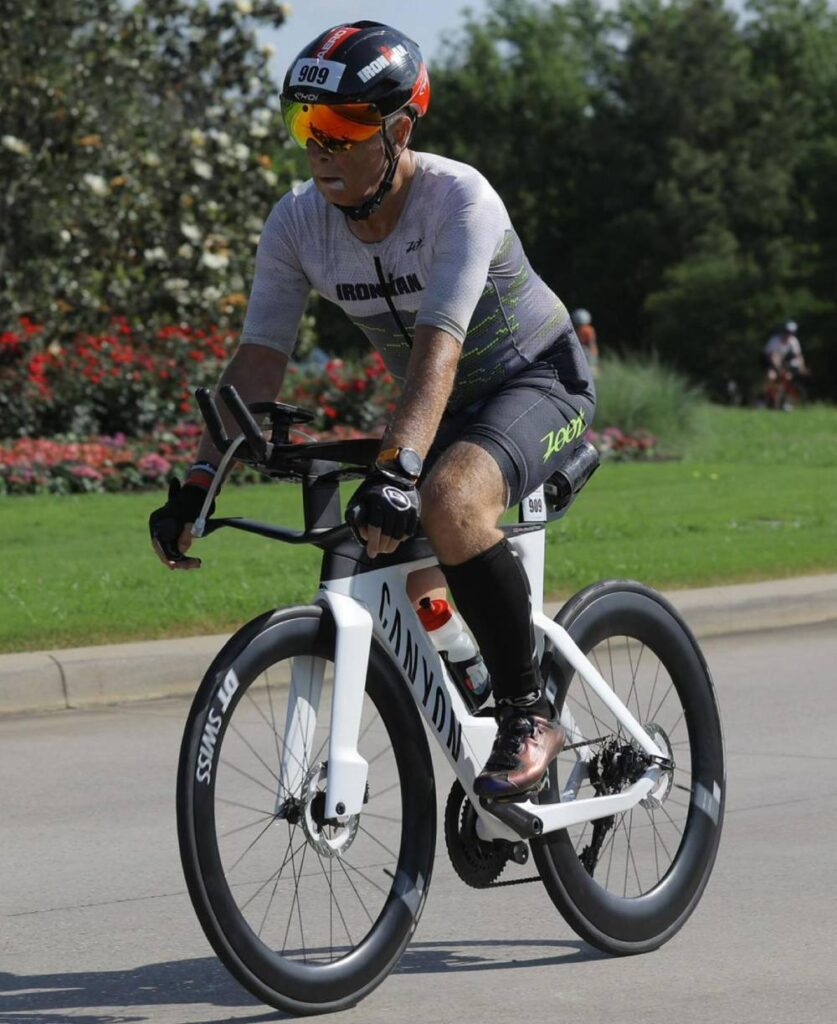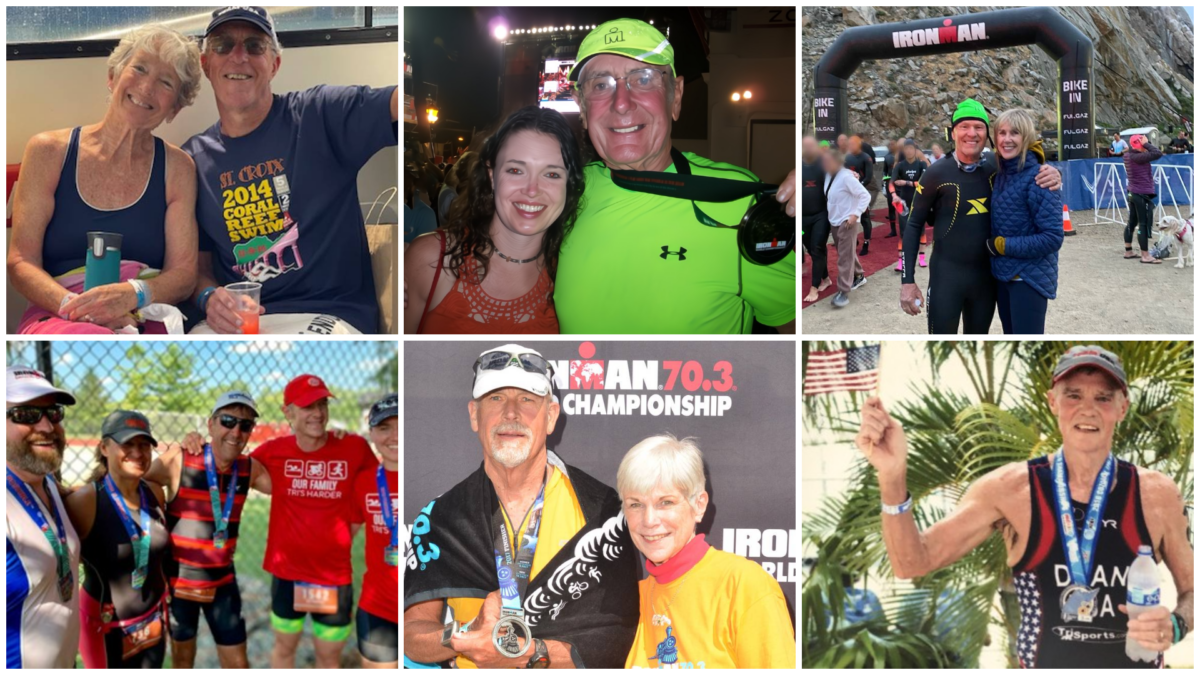Five Things I Learned Starting Triathlons After 50
By Hilary JM Topper, MPA
Deciding to train for a triathlon felt like a mix of excitement and madness. I was 53, more used to my office chair than a bike saddle, and the idea of swimming, biking, and running in one event seemed like something only for elite athletes in their twenties. Still, a spark of curiosity was ignited. I wanted a new challenge, a way to redefine what I thought was possible for myself in this new chapter of life. That journey from hesitant beginner to confident finisher taught me more than I ever expected.
The world of triathlon might seem intimidating at first, filled with images of super-fit athletes and advanced equipment. But I found a different reality—one that is welcoming, doable, and deeply rewarding, especially for those of us who start later in life. If you’re in the same place I was, wondering if you have what it takes, I want to share the five most important lessons I learned. These insights helped me reach the finish line and can help
you start your own amazing journey.
1. Triathlons Are for Every Body Type
Before I signed up for my first race, I imagined a typical triathlete as someone lean, muscular, and probably half my age. I worried I was too old, not in good enough shape, and didn’t fit that mold. This is the biggest myth I want to bust. Triathlons are open to everyone, no matter your age, weight, or current fitness level.
At my first event, I was amazed by the variety of participants. There were people of all shapes and sizes, from college students to retirees in their 70s and 80s. I saw competitors who were muscular and others who were slender. Some looked like seasoned athletes, while many, like me, appeared to be regular folks who decided to do something extraordinary. The finish line doesn’t care about your age or body type; it only cares that you showed up and did your best.
This past June, I participated in the Alpha Win Hudson Valley Triathlon. I saw an 85-year-old woman cross the finish line and receive a first-place medal. The triathlon community adopts a “finish line, not finish time” mindset, especially at the sprint and beginner levels. The focus is on participation and personal achievement. Whether you walk the entire run or swim with your head above water, completing the race is a major victory. The shared experience of pushing personal limits creates an instant bond among competitors. You’ll receive more encouragement and high-fives from strangers on the course than you might expect.
Related Post: Should You Choose Your Triathlon Distance Based On Body Type?
2. You Don’t Need All the Expensive Gear
When I committed to my first triathlon, I fell into a classic beginner’s trap: thinking I needed the best of everything to succeed. I went all in, buying a sleek, expensive carbon-fiber road bike with a power meter, a top-tier wetsuit, and every gadget the internet and my first coach told me was essential. I learned the hard way that my bank account took a much bigger hit than it needed. That fancy bike was beautiful, but it was also tough for a beginner. I spent more time worrying about scratching it than enjoying my rides. The truth is, you can complete your first triathlon using the basics. Found an old hybrid bike in your garage? Dust it off, get it tuned up, and it’ll get you through a sprint-distance race just fine. Any comfortable swimsuit will do for the pool, and a basic pair of goggles is all you need.
Start with what you have or can borrow. Focus your initial investment on a few key items that prioritize safety and comfort, such as a properly fitted helmet and a good pair of running shoes. As you progress in the sport, you can gradually upgrade your equipment. You will have a much clearer idea of what you truly need and prefer after you have a race or two under your belt. Don’t let the perceived cost of entry keep you from starting.
3. Find Your Tribe: The Power of Community
Training for a triathlon involves three different sports and doing it all alone can feel isolating and overwhelming. The most effective way I stayed motivated was by connecting with others. Finding a community, whether it’s a local tri club, a group of friends, or an online forum, can make all the difference. At first, I trained with my friend. But when she joined a triathlon club, I ended up going at it alone. Throughout my time in the sport, I found training partners and formed my own triathlon club, WeREndurance.
This “tribe” becomes your support system. They are the ones who will celebrate your progress, pick you up after a challenging workout, and cheer the loudest for you on race day. They understand the unique challenges and triumphs of this sport. If a local club isn’t an option, look for Facebook groups or other online communities. Sharing your journey, even virtually, helps keep you accountable and reminds you that you are part of
something bigger.
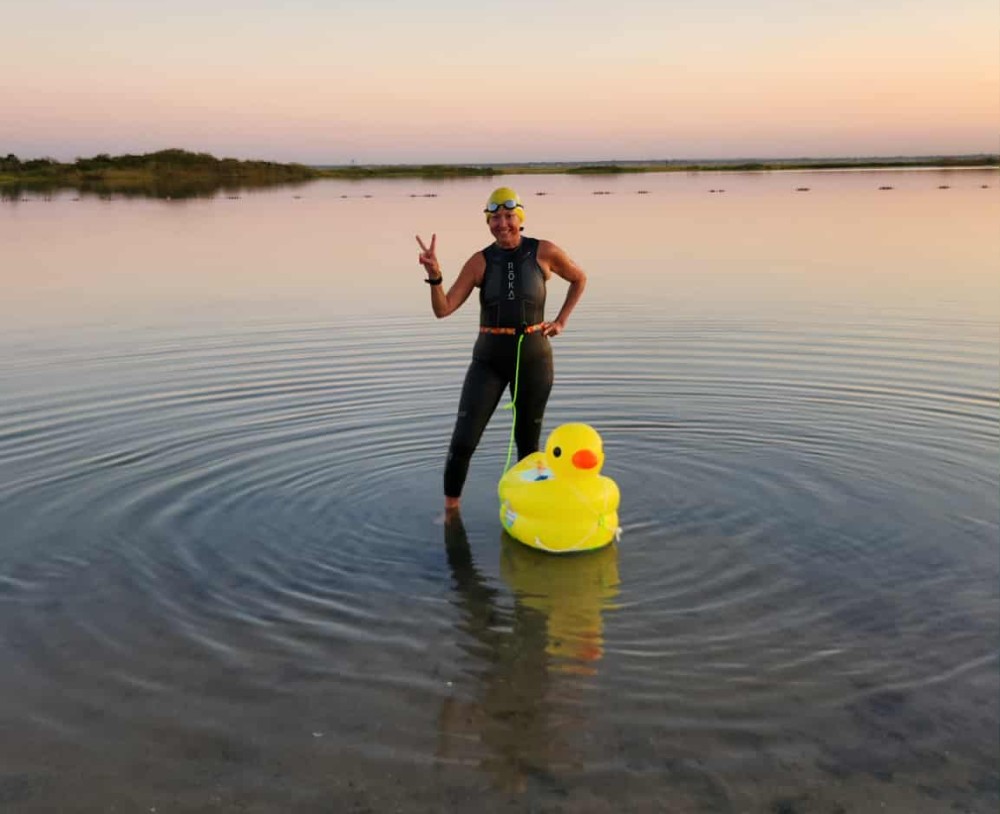
4. Pace Yourself in Training and in Life
As a driven person, my first instinct was to go from zero to one hundred. My kids still laugh about it.
I hired a coach who didn’t work with athletes over 50. He designed an aggressive training plan and pushed me hard every day. (If I missed a workout, he would yell at me over the phone.) Within a few weeks, I was exhausted, sore, and completely demoralized. My body was sending me clear signals that I wasn’t listening to. Learning to pace myself was an important lesson in both physical training and my mental approach. Clearly, I left that coach and found another who was more supportive and understanding of my needs.
The key to longevity in endurance sports is consistency, not constant intensity. Your body needs time to adapt and recover, especially as you get older. Rest days are essential; they are a crucial part of your training plan. This is when your muscles repair and become stronger.
Listen to your body. If you feel pain (not just discomfort), it’s a sign to back off. If you’re feeling tired, a shorter, easier workout or even a complete rest day is more beneficial than pushing through and risking injury or burnout. This patient approach allows you to build a solid fitness base without breaking your body down. You’ll arrive at the starting line healthy, strong, and genuinely excited to race.
5. Celebrate Every Small Victory Along the Way
The finish line of a triathlon can seem impossibly far away when you’re just starting out. Focusing only on that distant goal can be discouraging. Instead, I learned to focus on celebrating the small wins that happen every week. Did you swim your first nonstop lap? That’s a big victory. Did you finish your longest bike ride so far, even if it was just a few miles? Celebrate it. Did you wake up for an early morning workout when you’d rather stay in bed? Recognize that discipline. These small wins are the foundation of your journey. Every milestone, no matter how small it appears, proves you’re making progress. It builds momentum and confidence. I started keeping a training journal to record these small wins. Looking back at it after a tough day became a powerful reminder of how far I had come. This habit of acknowledging progress changes the entire process from a strenuous grind into a fulfilling adventure filled with moments of pride.
Take the Leap
Starting triathlons after 50 was one of the most empowering decisions I’ve ever made. It challenged me physically and mentally, introduced me to a vibrant community, and gave me a newfound sense of capability. It taught me that age is just a number and that our limits are often self-imposed.
If you have even a tiny bit of curiosity about triathlons, I encourage you to explore them.Start small, be kind to yourself, and enjoy the process. You don’t have to be the fastest or the fittest. You have to be willing to try. Take that first step, whether it’s looking up a local pool, taking your bike for a spin, or just going for a walk. You might discover thatyou are capable of far more than you ever imagined.
My new book, Unlocking the Triathlon: A Beginner’s Guide to Competing in a Triathlon, published by Meyer & Meyer Sports, talks about how to get started and everything you need to know about swimming, biking, and running. It also has a section on nutrition and supplements. In addition, there are training plans for both sprint and Olympic triathlons. Further, there’s a whole section on triathlons and seniors. You can pre-order it
on Amazon or Barnes & Noble. It will be available at your local bookstores before Christmas, 2025.

About the Author
Hilary JM Topper, MPA, is a USA Triathlon Coach Level 1, USMS Swim Coach Level 3, WOWSA Open Water Swim Coach, and RRCA Run Coach Level 1. She actively blogs on ATriathletesDiary.com and maintains a lifestyle blog at HilaryTopper.com. Her first book, From Couch Potato to Endurance Athlete – A Portrait of a Non-Athletic Triathlete, was published by Meyer & Meyer Sports in 2022
Her upcoming book, Unlocking the Triathlon: A Beginner’s Guide to Competing in a Triathlon, is now available for pre-order. The book will be released during the first week of November, during which she will tour various cities across the country promoting it. For questions or to invite Hilary for a presentation at your store, contact her via email at Hilary@hjmt.com or call 516-220-3110.
Related Post: Book Review: From Couch Potato to Endurance Athlete: A Portrait of a Non-Athletic Triathlete
What Do You Want to Ask Hilary?
Post your questions for Hilary in the Comments below.
Comments: Please note that I review all comments before they are posted. You will be notified by email when your comment is approved. Even if you do not submit a comment, you may subscribe to be notified when a comment is published.
For Another Perspective . . .
For another perspective on beginning triathlon after age 50, check out Terry VanderWert’s Triathlon Adventures Across America.
